Art restoration of teeth
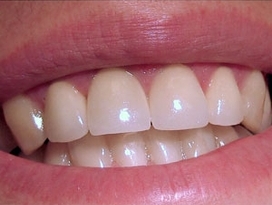
The process of tooth restoration is the restoration of the shape and functioning of damaged teeth.
You can restore the appearance of a tooth using composite materials or onlays (veneers).
If it’s not just about restoring a tooth, but about giving it a high aesthetics, then they’re talking about artistic restoration.
What is art restoration of teeth
Artistic restoration of teeth is a complex of dental procedures aimed at improving the aesthetics of teeth and maximizing their natural state.
Dental restoration can be carried out using filling composite material or veneers.
It is performed by direct or indirect restoration.
Indirect Restoration Method
An indirect method of restoration is prosthetics with veneers, crowns, or bridges performed by an orthopedic dentist.
- It determines the type of future design and draws up a treatment plan, since before prosthetics treatment and preparation of teeth are often required.
- In case of gum disease, the patient is referred for treatment to a periodontist.
- After the patient is prepared for prosthetics, the orthopedic dentist takes the casts and sends them to the dental laboratory.
- According to the obtained casts, the dental technician in the laboratory makes dental structures, attaching great importance to the shape, shade, and contact surfaces of the teeth.
Direct restoration
The presence of high-quality modern composite materials gives doctors the opportunity to independently carry out tooth restoration using the direct method, i.e. directly in the oral cavity.
However, tooth extension requires the dentist not only the ability to work with the material and deep anatomical knowledge in terms of aesthetics and functioning, but also an understanding of the artistic taste.
How do
Art restoration of teeth is carried out by a dentist. Direct restoration is carried out by photopolymers (light-cured filling materials).
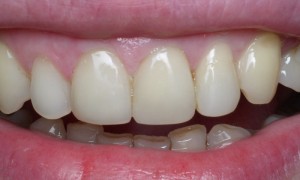
Stages of restoration
- Preparatory stage. At this stage, using a special scale, the color of the restored tooth and the corresponding color of the composite material that will be used when building the tooth are determined. Before starting the restoration, hygienic brushing of the teeth with mandatory removal of plaque and tartar is mandatory.
- If necessary, the dentist anesthetizes.
- Removing by drilling tooth tissues affected by caries, replacing old fillings with new ones.
- A tooth with a cofferdam (latex shawl) is isolated from wet breathing and patient saliva.
- With severe tooth decay: more than half, it may be necessary to fix the pin in the root canal so that the restoration does not fall out under load.
- Tooth extension and restoration of its shape with composite material. The doctor makes a layer-by-layer application of filling material of different shades and transparency, which in the end will give the tooth a natural look.
- The final modeling of the tooth shape using burs, followed by grinding and polishing of its surface.
Video: “Direct restoration of teeth”
Disadvantages of tooth extensions
Among the disadvantages of restoration, the most significant are:
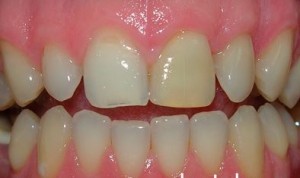
- Darkening and loss of gloss of the filling material. If the loss of aesthetics on chewing teeth is not so terrible, then on teeth falling into the smile zone is a very unpleasant minus. Correct the situation can only be a complete replacement of the restoration.
- The risk of damage to the restoration. The larger volumes of the tooth are restored, and at the same time also depulped, the greater the likelihood of a possible failure of the restoration. Breakage of the restored tooth can occur when the masticatory load is exceeded.
Cost
Prices for restoration depend on the volume of tooth extension and consist of the following positions:
- Anesthesia
- The use of cofferdam.
- Installation of the pin.
- The cost of the design itself.
- Extension of the tooth crown with filling material.
The price also includes a sterile kit (gloves and mask for the dentist, bib and shoe covers for the patient) and the cost of sterilizing the instruments.
The cost of the pin may vary within from 50 up to 2000 rubles (depending on the manufacturer of the structure).
You can find out more precisely how much the restoration costs after consulting a specialist.
| Type of restoration | Prices (RUB) |
| Complete tooth restoration | 5000 — 6500 |
| Partial tooth extension | 3000 — 4500 |
| Chipped tooth restoration | from 1500 |
| Fiberglass pin | 1500 — 2000 |
| Metal pin | from 50 |
Reviews on the artistic restoration of teeth
In some cases, patients are dissatisfied with the restoration of teeth. Most often, they complain about a weak aesthetics.
This is due to a violation of the rules of tooth restoration, when, for example, transparency is not taken into account. As a result, the tooth becomes indistinguishable from plastic.
- Three years ago, as a result of an injury, a small piece of tooth broke off. I turned to the dental clinic, where they increased my tooth with light-hardening filling material. The result pleased me, the tooth looked as before. But after two years, the restored tooth site darkened, and now it does not look aesthetically pleasing. I think that it will be necessary to close the defect with veneer.
- Since childhood, I had crooked teeth. After braces, which I wore for a year, the teeth became smoother, but the curvature remained a little on the lower incisors. Four years ago, to hide a tooth defect, they installed veneers on my front teeth. At first I was anesthetized, and then my teeth were slightly sharpened on the front side. It didn’t hurt. When it was all over and I saw my new teeth, the result made me very happy. All the teeth are now smooth and beautiful.
- My front teeth are crooked since childhood. How much I was tormented with them, complexed, but did not want to put the bracket system. Two years ago I was treating a tooth, and the dentist advised me to do an artistic restoration. I have installed vinyl linings. All the complexes immediately disappeared, but now I am concerned about the question: is it dangerous to put the veneer on a depulped tooth.
Art restoration of teeth photo: before and after
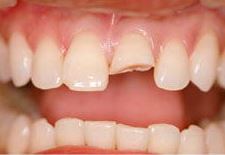 |
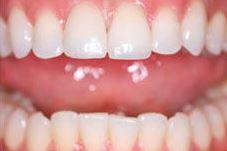 |
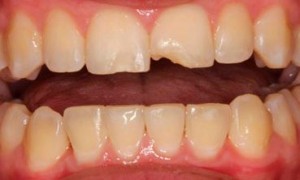 |
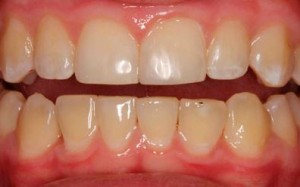 |
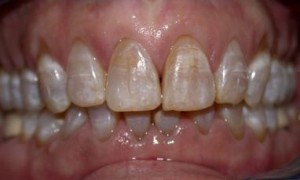 |
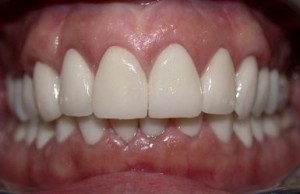 |